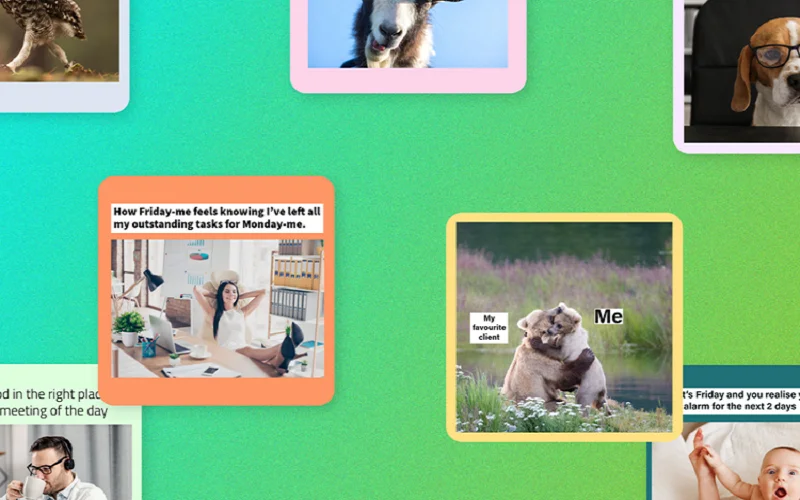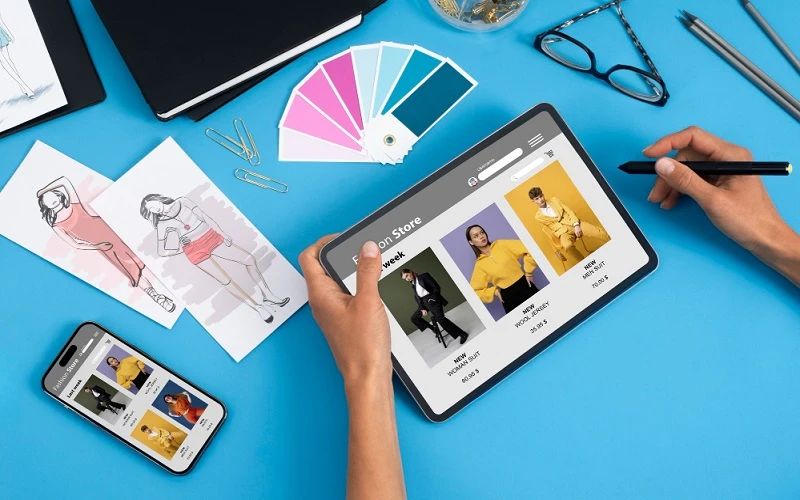Let’s be honest, memes are everywhere. From your morning scroll through Instagram to the group chat with friends, chances are you’ve already laughed at, shared, or even tagged someone in a meme today. They’re quick, clever, and instantly relatable. In fact, memes have become the internet’s universal language, a way for millions of people around the world to connect without saying a word.
And the amazing thing? You don’t have to be a Photoshop genius or a professional comedian to join the party. With current technology, you can create your own meme in minutes, and it can be as funny, and sometimes even funnier, than the ones that are currently popular.
What was once inside humor on specialized internet forums has now become a common communication vehicle for everyone: students, marketers, teachers, and businesses.
History of Memes
The term meme was coined by Richard Dawkins in his 1976 book The Selfish Gene. He used it to describe cultural units like ideas, tunes, or styles. The idea of memes shifted from Dawkins’ cultural concept to a distinctly digital phenomenon in the early internet (1990s–Early 2000s).
With the growth of forums and imageboards like Something Awful and 4chan, memes became recognizable as image + text formats. Platforms like Facebook, Twitter, Instagram, and Reddit rapidly sped up meme circulation (2010s).
Memes are now integral to global communication. Short-form video platforms like TikTok, Instagram Reels, and YouTube Shorts dominate meme culture with trending audio and formats.
Why Memes Tap In
Memes work because they make us feel something instantly. A single picture and a quick caption can convey emotions that would take a whole paragraph.
Look at the “This Is Fine” meme (cartoon dog drinking coffee amidst a room full of flames). It is precisely how many of us become when life gets a little chaotic, but humorously, not seriously. That’s the magic of memes: they can convert hard, awkward, or even boring situations into humor and edibility.
They’re fast too. Social media is trend-driven, and memes are among the quickest ways of jumping on the bandwagon. An unexpected sporting upset, a celebrity tidbit, or even a breaking news story, before you know it, there’s a meme circulating about it on Twitter, Instagram, and TikTok.
More Than Just Laughs: Memes in Marketing
Here’s the catch: memes aren’t for teens killing time online. Businesses, small and big, are discovering that memes have a way of getting audiences involved that old-school commercials never could.
Netflix is a great one. Their social media pages are full of memes spun off from their own shows. It’s enjoyable, but it’s also intelligent promotion, because instead of forcing ads down people’s throats, they’re creating content that people truly want to devour.
Even small companies can get in on it. A neighborhood coffee shop can create a “Monday Mood” meme with a sleepy-eyed coffee cup, and suddenly the brand feels human, humorous, and relatable. Done well, memes can start conversations, get shared, and create loyalty without anyone ever thinking they’re marketing.
Tips for Making Memes People Actually Share
If you’ve ever tried making a meme, then you’re aware that it’s not just a question of overlaying some text over whatever image is handy. Good memes follow a recipe:
Make it topical. Be relevant to what your audience cares about, what’s hot, day-to-day issues, or shared emotions.
Be concise and to the point. The joke needs to land immediately. If readers need to stop and “get it,” then it fails.
Match the tone. Do you want to be humorous? Sarcastic? Heartwarming? Keep the tone the same as what feels natural for you or your company.
Use powerful visuals. One picture with a short caption works best. Too much junk destroys the vibe. Here’s a quick example: get a bakery to display a meme of the popular
“Nobody: / Absolutely nobody: / Us at 3 a.m. baking cookies.
” It’s funny, relevant, and still related to what they do. That’s how you achieve humor and identity in equilibrium.
Pitfalls to Watch Out For
Sure, not all memes are successful. And sometimes the wrong one can even backfire. Here’s what to be careful about: Recycling over an old joke. Peddling a meme that’s months out of date can make you look out of touch. Lacking original thought. If you just re-share something which is already viral, you’re contributing nothing original.
Keeping your audience in mind. A meme which works for college students can be a flop with a corporate crowd. Going overboard. Memes are like spice, used well in moderation, but overwhelming if you put them on everything.
Why Memes Actually Matter
If you look a bit closer, memes are little time capsules. They hold on to what is funny, what is bitter, or what fascinates us at some given moment. They’re amusing, yes, but they’re engaging too.
Think of political campaigns using memes to share messages, or teachers using memes on their slides to attract learners. They’re not merely humor; they’re communication, learning aids, and even persuasion tools.
And personally, making a meme is just for kicks. There’s some pleasure in taking an idea or in-joke and crafting an image that will have people laughing, or nodding their head, within seconds of viewing it.
Wrapping It Up
Memes were once goofy internet fads, but they’re now one of the most powerful methods by which we communicate on the internet. They’re quick, they’re relatable, and when used properly, are poisonous to the point.
Whether you’re someone who just wants to add a little humor to your group chats or a business looking to connect with your audience, memes open up endless creative possibilities. They’re not just entertainment, they’re engagement, expression, and connection wrapped up in one shareable package.
The trick? Keep them authentic, creative, and tailored to the people you’re talking to. Do that, and you’re not just scrolling through memes, you’re helping shape the conversation.




